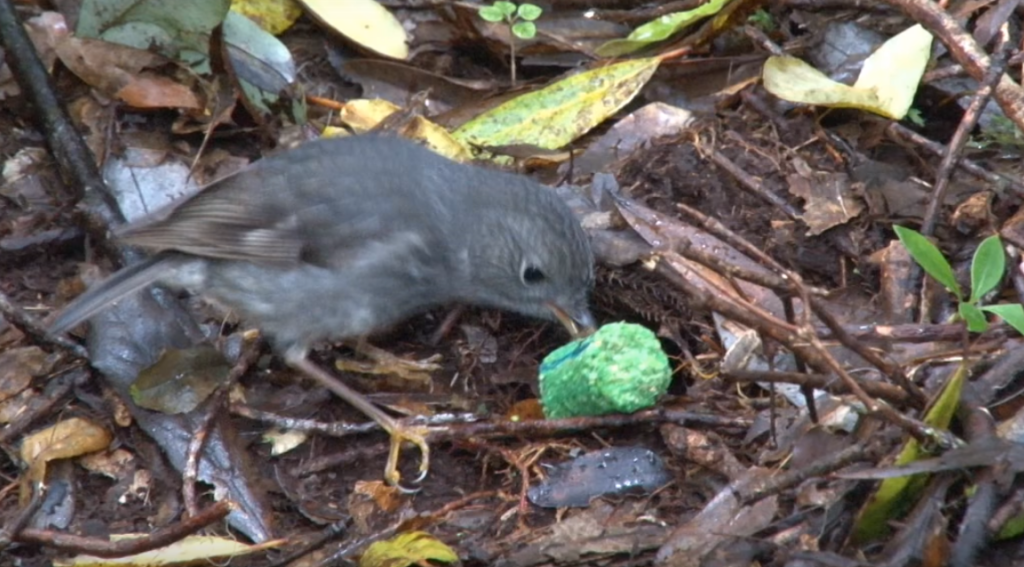The alternative to using 1080
- By Phillip Waddington
- •
- 06 Mar, 2019
- •
Let's not poison the environment . . .

Managing multiple mammalian pest populations
by Judy Grindell, Landcare Research April 01, 2011
Despite spending approximately $110 million per annum on the management of mammalian pests, they are still here and still threatening biodiversity conservation.
Even where pests are managed, effective control may be seriously constrained by the unpredictable responses of other pest species. For example, rodent numbers sometimes increase following possum control operations, which may lead to increases in stoat populations and a consequent decrease (through predation) of some bird populations.
Wendy Ruscoe (Landcare Research) and her colleagues have completed a large-scale, multi-faceted experiment that has been investigating the driving factors and interactions between pest species and how these may affect the outcomes of pest control. Wendy says every man and his dog (literally) have worked on the project, with the key Landcare Research staff being Peter Sweetapple, Ivor Yockney, Roger Carran, Mike Perry and Sam Cave. There were eight 900-ha study sites in mixed podocarp-tawa forests across the Kaimai Ranges, Manukau Plateau, Whirinaki and Te Urewera (the last two requiring helicopter access).
The researchers were investigating whether:
- food availability drives temporal variation in pest abundance
- removal of top-level predators results in increases of secondary pests because they are not being eaten
- removal of a pest population leads to increased competitor pest populations.
During the four years of field work, the team experimentally manipulated pest populations, with each of the “treatments” replicated over the eight study sites, by:
- controlling possums and rats with a one-off aerial 1080 baiting operation,
- using same control protocol for possums and rats but with continuous additional control of rats with toxic in bait-stations
- controlling stoats with continuously set traps, and
- no-treatment (no control)
On each site, the baseline population size and temporal changes of rats, mice, stoats and possums were monitored, rats, mice and possums were live-trapped, marked with ear tags, and released during five-night trapping sessions in November, February, May and August. Stoat populations were monitored using tracking tunnels and hair-collecting tubes, with the hair being used to identify individual stoats by DNA ‘fingerprinting’.
Additional small-scale experiments quantified how stoats (predators) and possums and rodents (primarily herbivores) modified their food intake rate with varying food availability. Ground-dwelling invertebrates were monitored using pit-fall traps before and after each control operation. Weta were also counted in purpose-built weta houses attached to trees.
Carrying out all this fieldwork was a huge logistical exercise and depended on skilled field staff. Mostly everyone camped or used huts for up to two weeks at a time, three sessions a year just for the monitoring. Wendy notes that they also needed a raft of permits . . . from Landcare Research (animal ethics approval), DOC (research permits and permits to land helicopters in some areas), consent from four iwi groups, permission to use veterinary drugs, cyanide licenses, Medical Officer of Health approval. “Getting all these approvals was no easy task.” Wendy says they also worked with AHB to have the initial 1080 operation done (part of a job they were doing anyway), and local contractors did the continuous stoat trapping and rat control.
Results
Results of the experimental manipulations produced both expected and unexpected results.
- Removal of the top predator (stoat )from the system did not lead to an increase in the ‘meso- predator’ (rat) as hypothesised.
- However removal of possums using 1080 lead to a significant increase in the ‘competitor rats’ with rat numbers increasing to higher levels than they were prior to 1080 baiting and to higher levels than in the sites that weren’t poisoned at all.
- Similarly, on sites where both possums and rats were controlled to low levels, mouse population numbers increased to higher than they had been previously.
- Where rat populations were reduced, there was an observable increase in occupancy rates of the weta houses by tree weta – a favourite rat food.
The data collected from all these experiments is now being used to develop computer models of the four pest species (possums, stoats, rats and mice) and their complex interactions with each other and their environment. These models will be a significant breakthrough in predicting variation in pest abundance over time, and how secondary pests will respond to primary pest control. The models will enable pest managers to assess the relative biodiversity and economic benefits of alternative pest control strategies to protect conservation assets.
Wendy emphasises that “clearly, the benefits of pest control operations must be assessed at the ecosystem level if biodiversity assets are to be protected”.
Contact info
027 644 8664Eastbourne, Wellington NZ
Links to Resources
Galleries

Copying and sharing of the contents of this website is strictly forbidden without consent.
All Rights Reserved .

